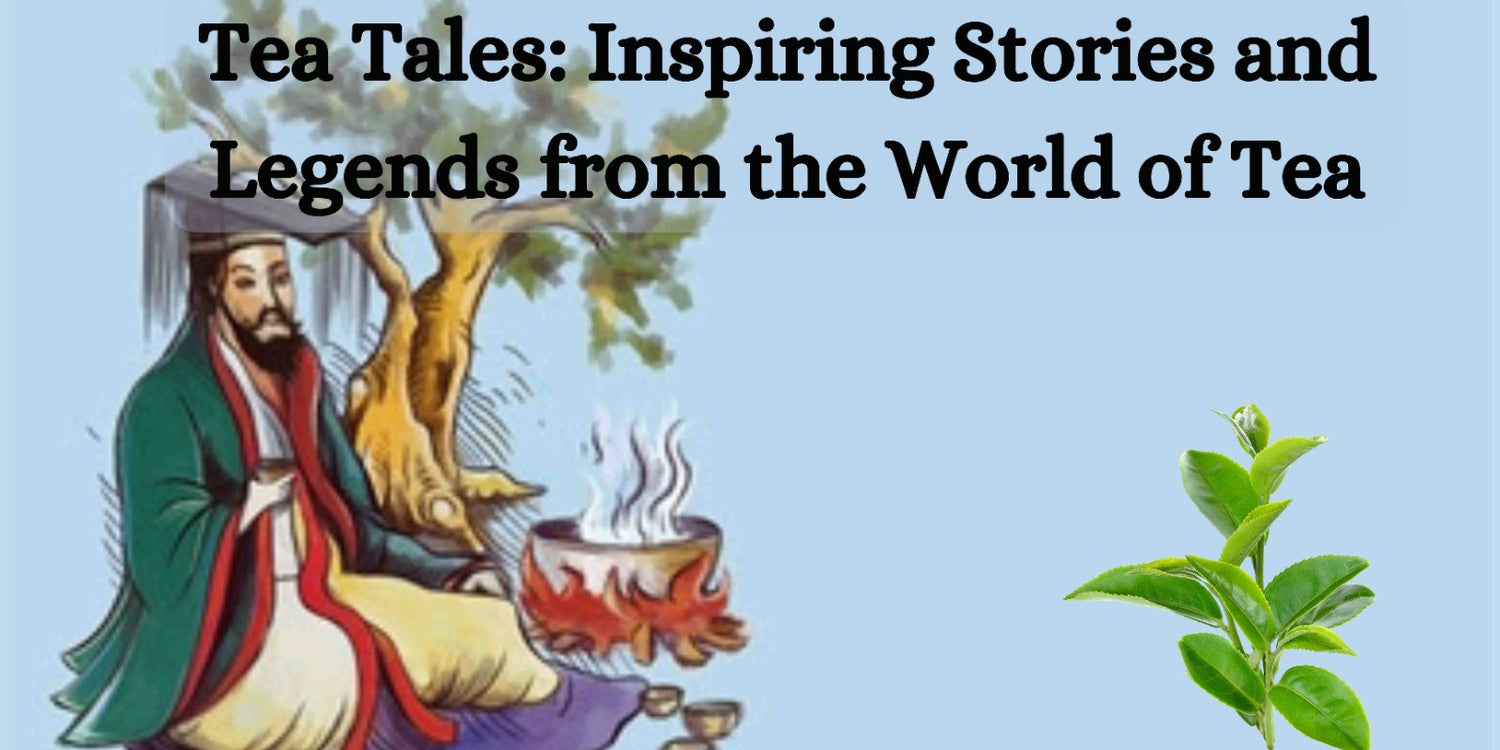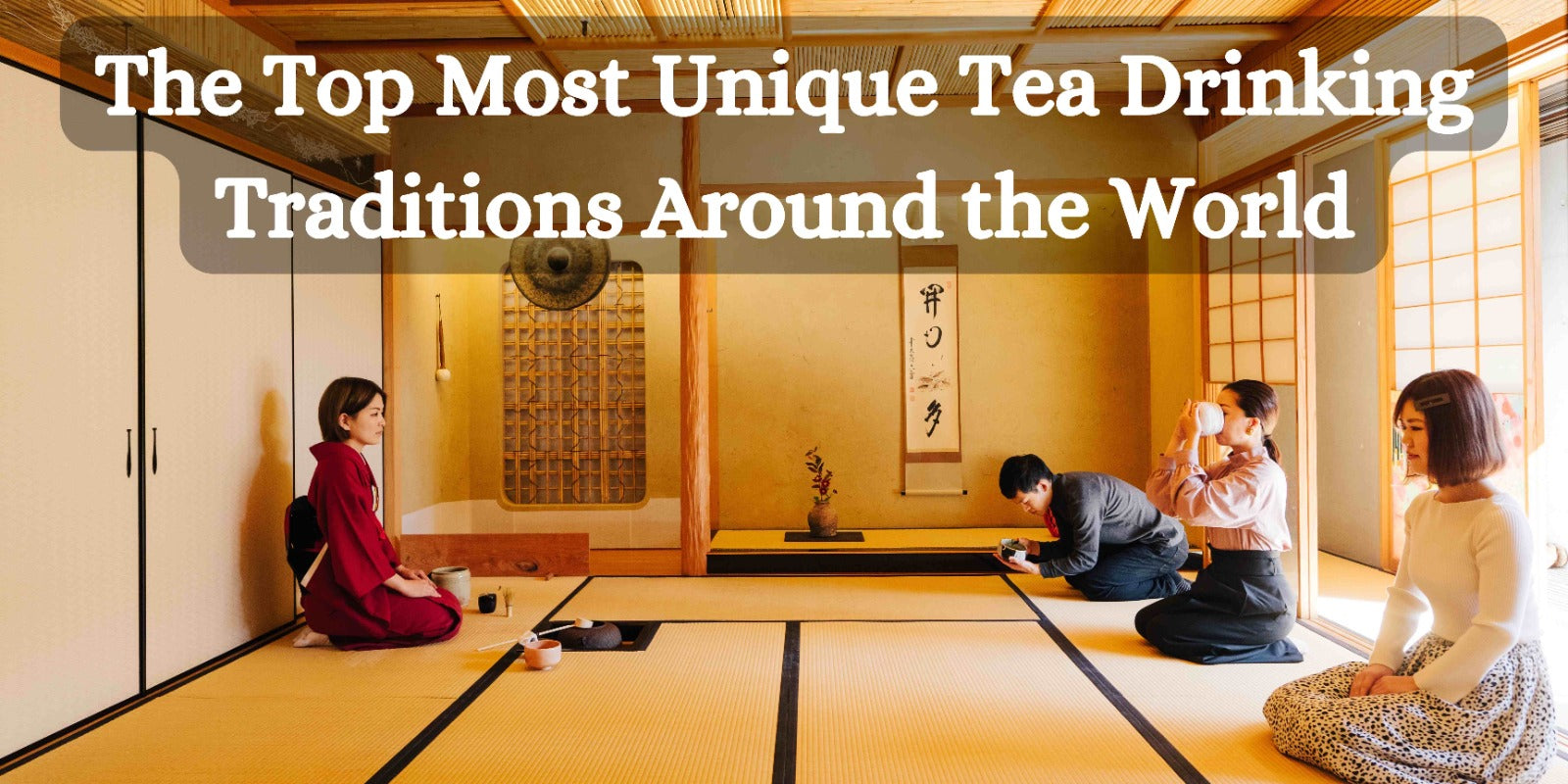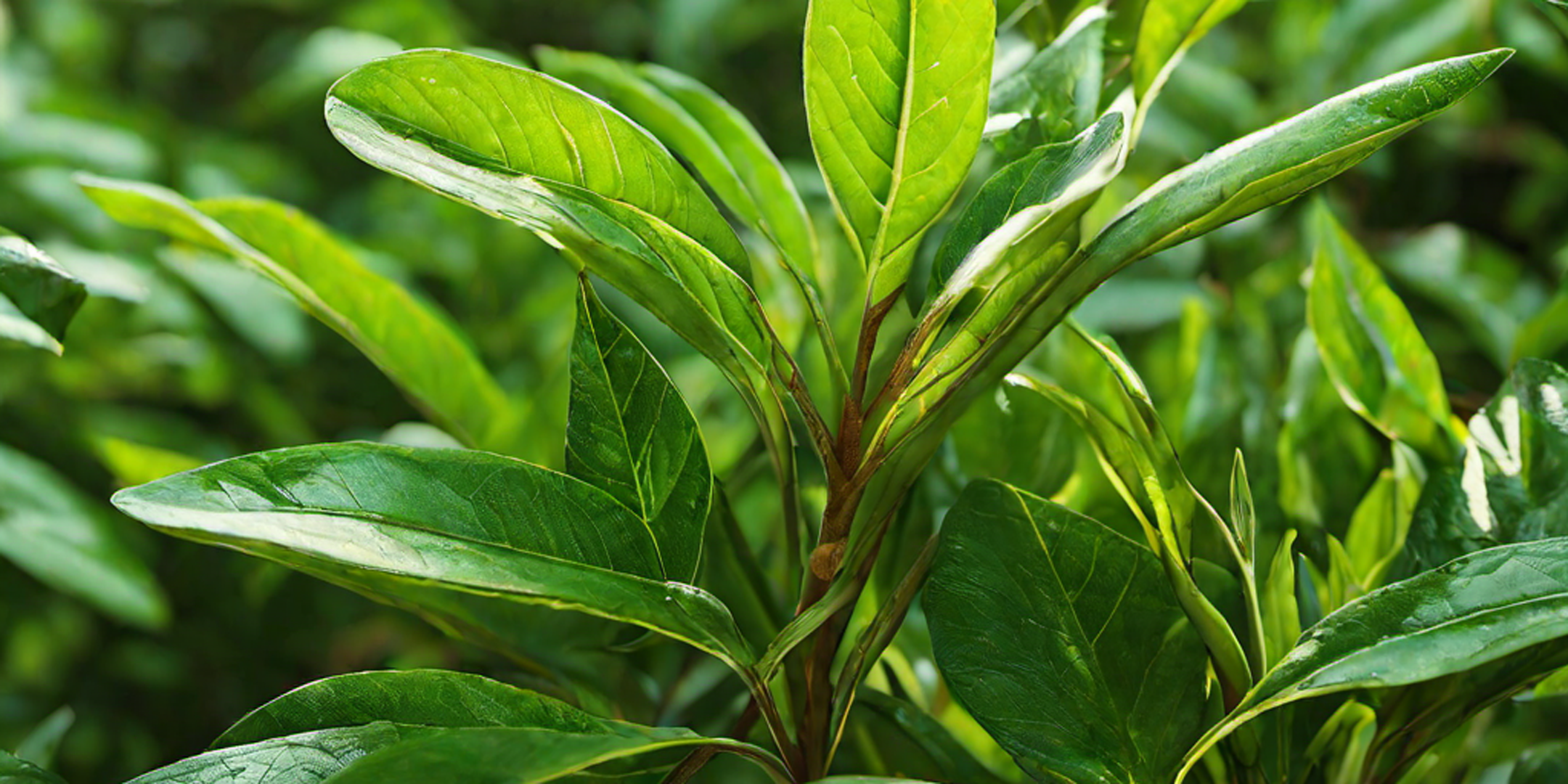The tea story is a narrative steeped in ancient myths and legends, tracing its origins back to Emperor Shen Nong in China, where it was discovered over 350 years ago. This beverage's voyage from being a divine elixir in Chinese folklore to becoming a cornerstone of daily life across various cultures underscores its timeless enchantment. Tea not only shaped the national drink of China during the Tang Dynasty but also became intertwined with traditional medicine, highlighting its significance beyond mere refreshment.
As the tea story unfolded, its spreading wings carried it from Asia to the Western world, with the Dutch and British playing pivotal roles in introducing this wonder to new lands. This narrative delves into the rich tapestry of tea's global journey, unfolding the legends of Darjeeling, Oolong, and more. Each cup not only offers solace but a sip of history, woven through the ages from Emperor Shen Nong’s serendipitous discovery to its place as a staple in households worldwide.
Emperor Shen Nong's Discovery: Unraveling the Mythical Origins of Tea
Shen Nong, often revered as the Divine Farmer, is a central figure in Chinese mythology and is celebrated as one of the legendary Three Sovereigns, deified emperors who lived thousands of years ago. He is credited with numerous agricultural achievements, most notably the discovery of tea, which has become a cornerstone of Chinese culture and medicine. According to folklore, Shen Nong's encounter with tea occurred serendipitously nearly 4,000 years ago when leaves from a nearby bush blew into his pot of boiling water. Intrigued by the pleasant aroma, he tasted the infusion and found it refreshing.
This fortuitous event is not just about the birth of tea but also highlights his broader contributions to Chinese herbal medicine. Shen Nong is said to have tasted hundreds of herbs to test their medicinal value, thereby establishing the foundations of traditional Chinese medicine. The Shen Nong Ben Cao Jing, a classic herbalist text, is attributed to him and lists 365 medicinal plants classified according to their health properties.
The story of Shen Nong and the divine elixir not only enriches the tea story but also underscores the deep historical and cultural roots of tea in China. This legend has been passed down through generations, illustrating the profound impact of this simple yet significant discovery on Chinese society and the world beyond.
The Legend of Darjeeling: Unraveling the Mystique of the 'Champagne of Teas'
Darjeeling tea, often celebrated as the "Champagne of Teas," originates from the picturesque slopes of the Himalayas in the Darjeeling and Kalimpong districts of West Bengal, India. This exquisite tea is noted for its unique flavor profile, which is meticulously crafted from the Chinese Camellia sinensis var. sinensis leaves. The region's elevation, ranging from 100 to 4,200 meters, along with its proximity to Nepal, Bhutan, and Tibet, creates an ideal climate that, when combined with the Indian terroir, enhances the tea's distinctive taste.
The journey of Darjeeling tea began in the mid-19th century when the British, seeking to establish a local tea industry independent of Chinese imports, introduced tea plantations in the region. The initial plantings utilized seeds smuggled from China by Robert Fortune, blending the finest of Chinese tea genetics with the rich Indian soil.
Throughout the year, Darjeeling tea is harvested in four major flushes, each offering a different flavor profile. The first flush, harvested after winter's dormancy, yields a light, floral tea with a hint of astringency. The second flush follows, distinguished by its unique muscatel aroma, a result of the tea plants being bitten by leafhoppers and the camellia tortrix.
The tea's excellence is recognized worldwide, leading to its protection as a registered geographical indication since 2004. This designation ensures that only teas produced on certain estates within these districts can be labeled as Darjeeling. Furthermore, many estates have embraced organic, biodynamic, and Fairtrade practices, enhancing the sustainability and ethical considerations of their tea production.
Darjeeling tea's legacy is not just in its taste but also in its contribution to the local and global tea culture, celebrated and cherished by connoisseurs around the world.
The Forgetful Farmer and the Legend of Oolong Tea
Oolong tea, renowned for its unique partial oxidation and diverse flavor profiles, traces its origins to a rather whimsical tale involving an absent-minded farmer named Wu Long Wang. According to legend, Wu Long Wang was more of a daydreamer than a diligent farmer. He often spent too much time under the sun, which not only tanned him but also led to his nickname, "Black Dragon".
On one fateful day, tasked by his father to return with a full basket of tea leaves or face punishment, Wu Long Wang's adventure took an unexpected turn. While pursuing a rabbit, he inadvertently shook his basket, causing the tea leaves to partially oxidize. The accidental oxidation altered the leaves' flavor, much to the delight of his fellow villagers. This serendipitous discovery led to the intentional shaking of tea leaves to achieve oxidation, a process that became a hallmark in the production of Oolong tea, named after Wu Long Wang himself.
The name "Oolong" also intertwines with another narrative where a tea planter discovered a tea bush entwined by a black snake. After crafting tea from its leaves, the unique drink was named "Oolong" by neighbors who witnessed the snake. Additionally, the legend extends to the divine intervention of Kuan Yin, the Iron Goddess of Mercy, who is said to have revived a withered tea bush, leading to one of the finest Oolongs known today.
White Peony Tea: Exploring the Romance and Timelessness of this Brew
White Peony tea, also known by its Chinese names Bai Mu Dan or Pai Mu Tan, is crafted from the Camellia sinensis plant, the same source as other renowned teas. This tea is particularly noted for its minimal processing, involving only withering and drying, which preserves its natural flavors and properties. The production of White Peony tea is an art that demands exceptional skill, resulting in a tea that presents itself in a beautifully natural form, complete with leaves, branches, and stalks.
Originating from Fuding in Fujian Province, a region acclaimed for producing the finest white teas, White Peony is made using one bud and two leaves, often covered with fine white hairs, a hallmark of high-quality white tea. This specific tea is distinguished from others like Gong Mei and Shou Mei by its brighter, greener leaves and a higher bud content. Despite its name suggesting floral inclusion, White Peony tea does not contain actual peony flowers. Instead, the name likely reflects the tea's delicate nature and possibly its light floral aroma.
The brewing of White Peony tea involves precise temperatures and timing to fully capture its essence. Ideally, the water should be very hot, around 190-194 °F, and the tea steeped for 2-3 minutes. This method helps in extracting a rich profile of catechins, known for their health benefits, including skin protection and anti-inflammatory properties. White Peony tea offers a gentle, refreshing taste with a full mouthfeel and subtle notes of melon, hay, and a floral bouquet, all contributing to its reputation as a sophisticated, nutrient-rich beverage.
Pu-erh Tea: A Story of Aging Gracefully
Pu-erh tea, originating from the Yunnan province of China, boasts a rich heritage tied closely to Pu'er City. This tea is distinctively crafted from the large-leaf Assamica variety of the Camellia Sinensis plant. The production of Pu-erh tea involves a unique aging process that categorizes it into two types: Sheng (raw or uncooked) and Shou (cooked or ripened). Sheng Pu-erh is known for its gradual aging process that enhances its flavor's depth and complexity over the years. On the other hand, Shou Pu-erh undergoes an additional 'cooking' step which accelerates the aging process, offering a different flavor profile.
The tea's aging process is not just a time-bound phenomenon but involves intricate chemical changes that mature and mellow the tea, making each sip a reflection of its aging journey. The microbial activity introduced during its unique processing also plays a crucial role in enhancing its flavors through biological and enzymatic changes.
Pu-erh tea is often pressed into various shapes, like tea cakes, which historically made it easier to transport and trade. These tea cakes, over decades, become highly valuable, with some vintage Pu-erh teas, like a 1950's Red Chop disc, reaching values over $10,000, highlighting the tea's desirability and rarity.
Each cup of Pu-erh tea not only offers a taste of its rich, earthy flavors but also embodies the terroir of its origin, reflecting the unique environmental conditions of the Yunnan jungles where these ancient tea trees thrive. Proper storage conditions, such as keeping the tea in a cool, dry, and odor-free environment, are crucial for maintaining and enhancing its quality over time.
Exploring More Tea Tales and Legends
The Spiritual and Cultural Journey of Tea
- Lu Yu's Contributions: Lu Yu, a revered Buddhist monk, significantly shaped the tea culture in China by researching tea's uses and health benefits. His work included developing brewing techniques and integrating tea into spiritual ceremonies, which profoundly influenced Chinese society.
- Tea's Introduction to Japan: During the Nara and Heian periods, tea was introduced to Japan by Chinese envoys. It was popularized by the monk Eisai, who brought tea seeds from China, planting them in Hirado and Kyushu, thus laying the foundation for Japanese tea culture.
- Eisai's Influence: Eisai wrote "Kissa Yōjōki" (Drink Tea and Prolong Life) in 1211, promoting tea's health benefits and introducing its consumption to the samurai class, which played a crucial role in embedding tea in Japanese traditions.
Legendary Teas and Their Origins
- Tie Guan Yin: This famous oolong tea from Anxi County, Fujian province, has a legend of a poor farmer named Wei Yin. He improved a temple dedicated to the Bodhisattva Guan Yin, who in a dream, showed him a tea shoot in a cave. This shoot grew into a vibrant bush, producing tea of unsurpassed quality, leading Anxi to become a significant tea center.
- Dragon Well Green Tea: Legend has it that Emperor Qianlong placed the leaves he picked in his sleeve when he heard of his mother's illness. After his mother drank the tea made from these leaves, she was cured, elevating Dragon Well's status to a tribute tea.
- Genmaicha Japanese Green Tea: Known as "Poor Man’s Tea," it was invented when commoners mixed roasted brown rice with cheaper tea leaves to make the expensive commodity more accessible.
Tea and Cultural Symbols
- Tetsubin Teapots: In Japan, from the mid-19th century to WWII, cast iron Tetsubin teapots were essential for heating water and brewing tea, symbolizing the integration of tea into everyday life.
- Hibiscus in Hawaiian Culture: The hibiscus flower, often used in teas, carries deep cultural significance in Hawaii, symbolizing beauty and joy. It is traditionally worn behind the ear to signify relationship status.
- Chamomile's Sacred Status: Among the Anglo-Saxons, chamomile was revered as a rare and sacred herb, valued for its healing properties, often used in traditional remedies and teas.
These tales not only enrich the global tapestry of tea culture but also highlight how deeply tea is woven into the fabric of various societies across the world. Each story and legend carries a piece of history, shaping the way tea is perceived and enjoyed around the globe.
Conclusion
Through the exploration of tea's rich tapestry, from its mythological origins with Emperor Shen Nong to the high-altitude gardens of Darjeeling and the whimsical tale of the forgetful farmer behind Oolong, we've journeyed across continents and cultures, uncovering the profound impact of tea on societies worldwide. The legends and stories woven around each variety, whether it be the divine intervention in the creation of Oolong or the romantic imagery surrounding White Peony tea, underscore not just the beverage's significance in daily rituals but its place in the annals of history and folklore. These narratives serve as a testament to tea's timeless allure and its capacity to encapsulate the essence of human ordeals, triumphs, and relationships through the simple act of brewing and savoring a cup.
As we conclude this narrative, it's clear that the world of tea is much more than a collection of flavors and aromas; it’s a realm where history, culture, and mythology merge, illustrating the universal human penchant for storytelling. The significance of these tales extends beyond their origins, offering insights into the cultural fabric of each society and the global tapestry of tea culture itself. While we've delved into a handful of these stories, countless more await discovery, each carrying the potential to enrich our understanding and appreciation of tea. As we enjoy our next cup, let us reflect on the journey of this humble leaf and its remarkable ability to connect us across time and place, inviting further exploration and admiration of its diverse and enriching tales.




